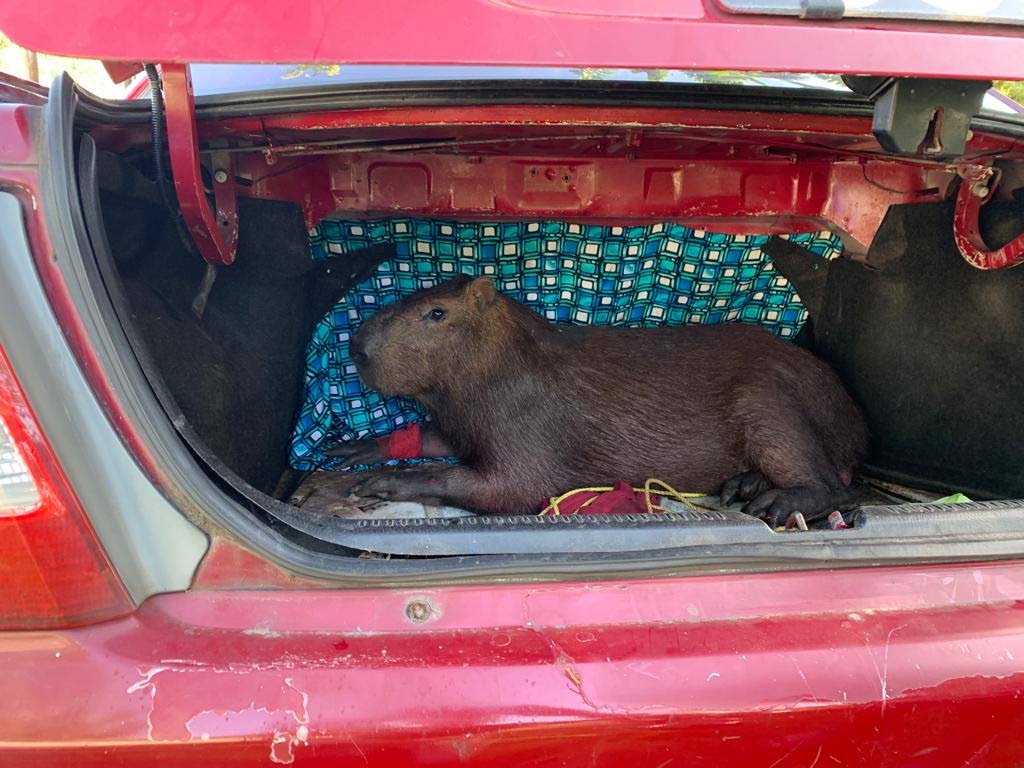Capybara captured in Port of Spain, released in bird sanctuary

A DISORIENTED capybara was rescued from certain death in downtown Port of Spain on Wednesday morning and later released, thanks to the heroics of environmentalist Ricardo Meade.
Meade, director of the El Socorro Centre for Wildlife Conservation, was in the city at the time and was called by police to handle the situation.
He met the visibly frightened animal opposite First Citizens Bank on the Brian Lara Promenade. The capybara took off and eluded Meade and several bystanders for about ten minutes but they eventually caught it after it ran into a glass window at RBC, which left it dazed.
It was tied down, placed in the trunk of Meade's car, and after approval, taken to the Winston Nanan Caroni Bird Sanctuary where it was released.
"We decided to ease the animal's stress by releasing it because they do hyperventilate," Meads said.
"It's a very hot day. The animal was drenched in sweat and it was clearly very uncomfortable."
Meade was told the animal was struck by a vehicle but, apart from sustaining some bumps and scratches, did not appear to have any broken bones or life-threatening injuries. It would likely have been fatally struck if left free to roam for much longer, he said.
Although the capybara's body shape resembles that of a wild pig, it is part of the rodent family. In fact, it is the largest rodent in the world and is of the genus hydrochoerus.
It is native to South America but has been spotted in Trinidad in increasing frequency.
"With coastal developments and man manipulating the coastal areas, the animals are being forced into other areas," Meade explained. There are several ways the capybara could have found itself downtown.
"It could have escaped from someone who was transporting it. People capture them and other exotic animals and they sometimes escape from the back of trucks, and so on. It could have jumped out on Wrightson Road, on the promenade, anywhere around there."
Alternatively, he added, "It could have escaped from someone who lives in the area or an institution. Or it could literally have come down from by the Beetham Gardens, by the water sewerage treatment plant – they are known to be around there. So they could have skipped Sea Lots and reached to Port of Spain."
There were videos circulating online showing capybara walking in groups at night in what appears to be the Beetham Gardens or its immediate vicinity.

Comments
"Capybara captured in Port of Spain, released in bird sanctuary"